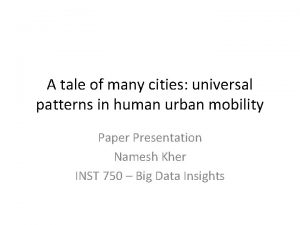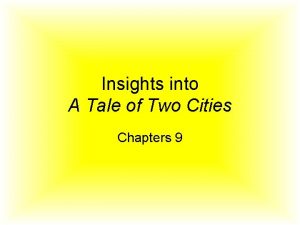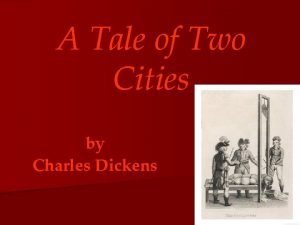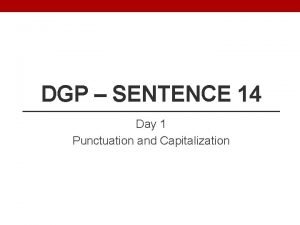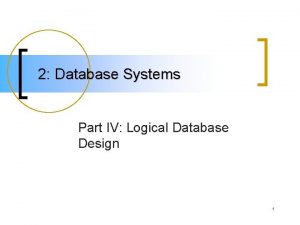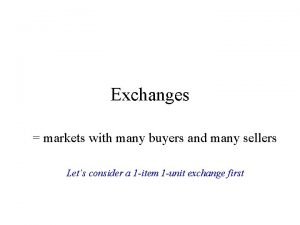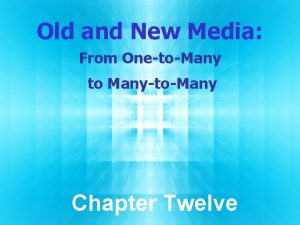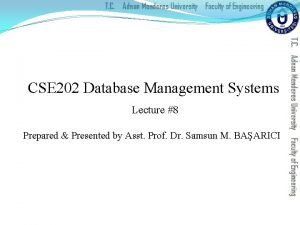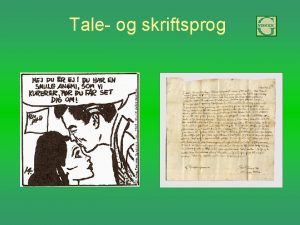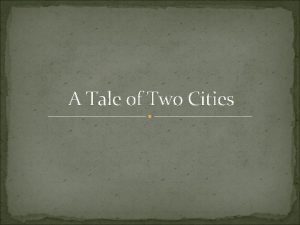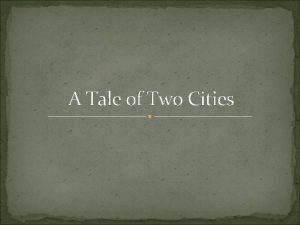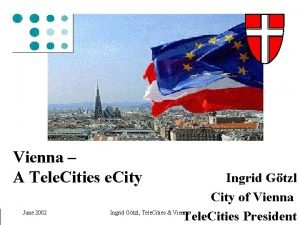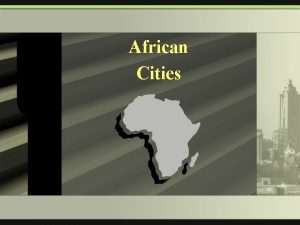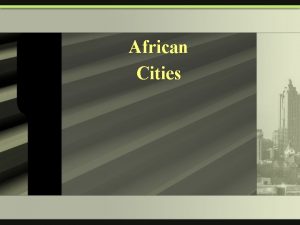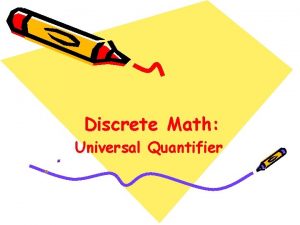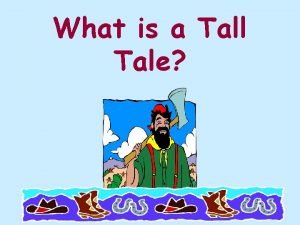A tale of many cities universal patterns in

















- Slides: 17

A tale of many cities: universal patterns in human urban mobility Paper Presentation Namesh Kher INST 750 – Big Data Insights

Introduction • Paper focuses on determining a relationship between mobility and distance • Talks about 2 classical studies of the past – Gravity Models: There is a direct relation between mobility and distance. – No direct relation between mobility and distance is a surrogate for intervening opportunities. • Data Source – For studies conducted in past major data sources were: surveys, small scale observations – Recent studies make use of 1. Locations based Social Services accessed via GPS enabled smartphones 2. Exploiting data from check-ins

Introduction • Research questions and facts that paper talks about – Focus on human mobility patterns in a large number of cities across the world – Do people move in a different way in different cities or do they have universal traits across disparate urban centers ? – Try and fit the results for some of the findings into a power law distribution • Analysis Insights – Analysis in favor of concept of intervening opportunities – Probability of transiting from one place to another is inversely proportional to a power of their rank (Intervening opportunities theory) – Can be analogous to finding friendship between two individuals

Results – Urban movements and power laws • Data set obtained from four square – Over 35 million movements of about 925 K users across 5 million places (2010) • Analysis was performed on distribution of human displacements in two different ways – First dataset was planetary (contained movements up to 20, 000 kms) – Second dataset was measuring human displacements within cities (dataset of about approximately 10 million users) • Observations – The first distribution is well approximated by a power law and has an exponent value of (beta = 1. 5) – Power law does not accurately fit the distribution (beta = 4. 67)

Results – Urban movements and power laws • Results Disp. across planet Disp. across cities

Results – Fitting movement across cities • For cities power law distribution fails. How to represent ? • Compare human movements across cities to analyze PDF of human displacements of 3 cities: • Observation: • Probability of a jump decreases after a threshold of 100 meters, but the shapes of distributions vary from city to city • The threshold could be because a city border might be reached

Results – The importance of place density • Study how the density of a city or a place effects human displacements within it • We first plot the density of a city (from check-ins) VS average distance of displacements observed in a number of cities • Observations – Average distance of human movements is inversely proportional to the city’s density – Example, a dense city like New York would have more shorter movements – Not only distance matters but the availability of places at a distance matters ! (Correlation = 0. 59)

Results – The importance of place density Density of a city VS Mean human transition

Results – The importance of place density • Next Step : Study how geographic size of a city effects human mobility • Plot average transition in a city versus the area size • Observations – Very low Correlation ( = 0. 19 ) – Density is more informative than area • Insights – Calculating rank value for each movement between a pair of places – The rank densities follow the power law plot – This suggests that probability of moving to a place goes down when the number of places nearer than a potential destination increases

Results – The importance of place density Area of a city VS Mean human transition Related Work: A similar finding showing the importance of rank models were observed in a research paper (2005) titled “Geographic Writing in social networks”. They suggested that the probability of observing a user’s friend at a certain distance in a social network is inversely proportional to the number of people geographically closer to the user.

Results – The importance of place density Studying density more closely Plot shows that probability of moving to a place decays when number of places near the potential destination Increases. Related Work: A similar finding showing the importance of rank models were observed in a research paper (2005) titled “Geographic Writing in social networks”. They suggested that the probability of observing a user’s friend at a certain distance in a social network is inversely proportional to the number of people geographically closer to the user.

Results – Modeling Urban Mobility • Run agent based simulation experiments using the rank based modeling technique Rank formula Observations Captures the movements in the city pretty well in spite of not taking in factors like heterogeneity, temporal factors etc.

Results – Modeling Urban Mobility

Results – The importance of place density • To highlight the importance of density, another study performed • Disp. Differ from city to city – Majorly because spatial distribution of places is different • Run agent based simulators as before but – Set of places are not as previous – They are taken from an empirical data set

Results – Modeling Urban Mobility Spatial Distribution across 3 cities

Further Discussion & Similar Work • The paper has performed well in performing empirical validation of past theories on human movements • Stouffer’s theory of intervening opportunities serves as a plausible explanation – Movements analyzed through respective rank values • Similar study on urban dynamics was done in the papers “A unified theory of urban living” and “Growth, innovation, scaling, and the pace of life in cities” – Cities are scaled versions of each other • According to observations density and spatial distribution are vital for mobility

Qn. A
 A tale of many cities
A tale of many cities Golden thread a tale of two cities
Golden thread a tale of two cities The gorgon's head tale of two cities
The gorgon's head tale of two cities A tale of two cities literary devices
A tale of two cities literary devices A tale of two cities summary
A tale of two cities summary In the novel a tale of two cities dgp
In the novel a tale of two cities dgp When does a “folk tale” become a “tall tale”?
When does a “folk tale” become a “tall tale”? How many capital cities in south africa
How many capital cities in south africa Dating serves several important functions that include
Dating serves several important functions that include Associations and correlations in data mining
Associations and correlations in data mining Erm erd
Erm erd Unary many to many
Unary many to many Many sellers and many buyers
Many sellers and many buyers Many sellers and many buyers
Many sellers and many buyers Many to many communication
Many to many communication Unary many to many
Unary many to many Er diagram in dbms
Er diagram in dbms Sqlbi many to many
Sqlbi many to many
